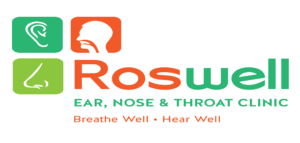Sleep Apnea Treatment
Obstructive sleep apnea, also known as sleep apnea or OSA, is a medical condition where you have pauses in breath while asleep because the soft tissues of the throat become loose and drop into the throat.
In-Office Procedures
These disruptions can last between a few seconds to a few minutes. They can occur only occasionally or more than 30 times in an hour. The breaks in breathing cause the person to move from deep sleep to light sleep, or even to wake up. The result is poor sleep, which has its own range of symptoms and risks. Symptoms can be mild or nonexistent or they can severe such as snoring, snorting, or choking while asleep
Snoring does occur with sleep apnea regularly but snoring does not mean that the person has OSA. Snoring can be caused by clogged sinus passages, allergies, and colds. Not every person with OSA will snore. Common symptoms include snoring, forgetfulness, moodiness, daytime drowsiness, problems concentrating, waking up gasping for air or choking, and falling asleep during the day.
The goal of treatment is to stop disruptions to breath and sleep and includes mouthpieces, breathing devices, and in severe cases, surgery. A common device used to help patients is an oral appliance, used while the patient is sleeping to gently shift the lower jaw slightly forward. This keeps the airway open and unobstructed while you sleep. Other devices include oxygen masks to ensure sufficient oxygen absorption.
Sleep Apnea and Children
While it is common to think of sleep apnea as an adult-onset disease, it is actually fairly common in children as well. Often, parents miss the signs of sleep apnea in their children while they are sleeping, but the side effects of sleep apnea are plain as day – and can be quite serious.
The ROSWELL Center for Ears, Nose, Throat, and Allergy has created a comprehensive pediatric sleep apnea (embed link to PSA page) guide for parents with questions about pediatric sleep apnea. If you suspect your child might have symptoms of PSA, schedule an appointment with our sleep apnea specialists today.
Sleep Apnea Treatment
CPAP (Continuous Positive Airway Pressure)
Continuous positive airway pressure, or CPAP, therapy treats obstructive sleep apnea by increasing air pressure in the throat, preventing the tissue collapse which causes breathing issues and snoring. CPAP is the most effective alternative to surgery for sleep apnea sufferers, and it’s typically one of the first treatments used with sleep disorders.
CPAP devices use one of three common delivery systems. These include either a mask covering the nose, a mask covering both nose and mouth, or prongs that sit in the nostrils. Benefits of using a CPAP device include deeper and more restful sleep, reduced daytime sleepiness, reduced incidence of depression, reduced incidence of heart problems, and lower blood pressure.
Sleep Apnea Surgery
If CPAP winds up being ineffective or cumbersome, there are other treatment options that involve the implantation of devices or surgery to treat sleep apnea symptoms. These include:
Inspire for Sleep Apnea
Inspire is a relatively new treatment option that involves the insertion of a device that monitors your breathing and uses a gentle pulse to ensure your breathing remains unobstructed during sleep. Think of it as a pacemaker for your sleep apnea. As one of the leading Inspire partners in UGANDA, we at ROSWELL Ear, Nose, Throat, and Allergy have created a complete Inspire guide to help our patients learn more about this innovative new frontier in sleep apnea treatment.
UPPP (Uvulopalatopharyngoplasty)
Severe snoring and obstructive sleep apnea frequently source back to limited airways. Soft tissue at the back of the throat may not be the origin of a patient’s condition, but removal of some of this tissue may relieve symptoms by increasing room along the airway.
The uvulopalatopharyngoplasty, or UPPP, removes tissue from the throat, including some or all of the uvula, portions of the soft palate, and tonsils and adenoids, if these have not been removed previously. Typically, the UPPP procedure follows other attempts to correct sleep apnea or snoring. Lifestyle changes, including weight loss and change of sleep positions, CPAP, and oral appliances are among the first-line approaches to these issues. Without improvement, UPPP may be the next step.
Epiglottoplasty
In some cases of obstructive sleep apnea, the epiglottis is the portion of the upper airway that collapses and creates breathing difficulty, as it blocks the opening of the larynx. This may make CPAP treatment ineffective, as the positive air pressure assists the collapse of the epiglottis.
First described in 1984, epiglottoplasty reshapes the airway by removing tissue from and around the epiglottis, increasing distances between the various tissues that collapse and impede breathing. The condition that epiglottoplasty addresses – laryngomalacia – is most often seen in infants and children up to two years old, who generally outgrow the condition. Laryngomalacia can affect adults as well, contributing to sleep apnea and other breathing issues.
Base of Tongue Reduction
Some cases of obstructive sleep apnea trace back to the size of the patient’s tongue. When the tissue of the tongue collapses during sleep and blocks the airways into the throat, breathing and sleep problems may develop. Typically, the base of the tongue is the culprit, and in patients with larger-than-normal tongue bases, reducing the size of the tongue may relieve sleep apnea symptoms.
Two procedures address the size of the base of the tongue. Resectioning is typically performed with a surgical laser, removing soft tissue from the tongue, but leaving its musculature intact. Coblation treatment uses radiofrequency energy to heat soft tissue, which is then suctioned out.
Lingual Tonsil Reduction
The lingual tonsil tissue is at the back of the tongue, not the typical tonsils of the palate, which most people are familiar with. Reducing the size of the lingual tonsils may be performed as part of tongue base reduction procedure above.
